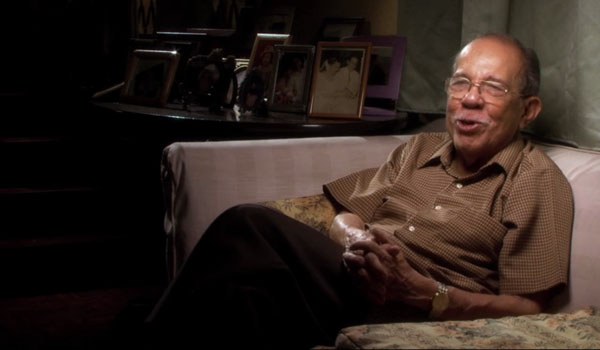Filipino director, producer, and screenwriter Eddie Romero, named National Artist for Film in 2003, has passed away, aged 88. Twitch‘s Todd Brown notes that “Romero achieved cult status abroad as a key figure in a host of Philippines based horror and exploitation films, though his filmography runs far deeper than that. The director of more than fifty features, you’d be hard pressed to find a genre or topic Romero didn’t tackle during his long and successful career and his passing marks the end of an era.”
“Romero, the ambitious yet practical artist, was known for not being satisfied with just dreaming up grand ideas,” writes Ma. Glaiza Lee for the Manila Bulletin. “He would always find ways to transmute these dreams into films.” Ganito kami noon, paano kayo ngayon (1976) was “set at the turn of the century during the revolution against the Spaniards. Later, the American colonizers followed a naïve peasant through his leap of faith to become a member of an imagined community. Aguila [1979] situates a family’s story against the backdrop of the country’s history. Kamakalawa [1981] explores the folkloric of prehistoric Philippines. Banta ng Kahapon [1977], his political film, is set against the turmoil of the late 1960s, tracing the connection of the underworld to the corrupt halls of politics. His 13-part series Noli Me Tángere brings the national hero [José Rizal’s] polemic novel to a new generation of viewers.”
Writing for the Daily Tribune, Roel Hoang Manipon recalls meeting Romero in 2011: “I asked if he had a favorite among his films. He answered: ‘I don’t really have a favorite film. When they’re finished, they’re finished…. But Ganito kami noon, paano kayo ngayon ‘is among the few of my films that I want to see preserved,’ Romero declared. Up to that time, Romero continued to write: ‘I still write. I can’t help writing. Even though I want to stop, I don’t know how.’ … He left a message for the young filmmakers: ‘Be true to yourself. Be you.’ The following year, I was smoking a cigarette outside the restaurant where a press conference just happened. I was startled to find Romero at the opposite side of the pillar. He had snuck out to have a cigarette. He smiled shyly as if a child caught red-handed. For minute, he was Kulas, who had gone through momentous events in Philippine history. But he himself made Philippine history. That was the last time I saw him.”
Update, 6/3: “He represented not only an era were Filipino films were golden and weren’t begging for viewership, but an artistry that was a product of time and hard work, with a little sprinkling of good old luck,” writes Francis Joseph A. Cruz. “He has seen it all. He has seen the triumphant premieres of Gerardo de Leon’s films. He has seen those films rot away to oblivion. He has seen Lino Brocka making waves for adventurous films in international film festivals. He has also seen the same Brocka direct popular melodramas for cash-hungry capitalists. He has seen Lav Diaz and Brillante Mendoza get critics’ approvals everywhere. He has also seen the empty local cinemas that screen those admired works. Romero has indeed lived a long life. Through the films he has left behind and the dreamers he has inspired, he will continue to live longer. Rest in peace, Mr. Romero.”
For news and tips throughout the day every day, follow @KeyframeDaily on Twitter and/or the RSS feed. Get Keyframe Daily in your inbox by signing in at fandor.com/daily.




